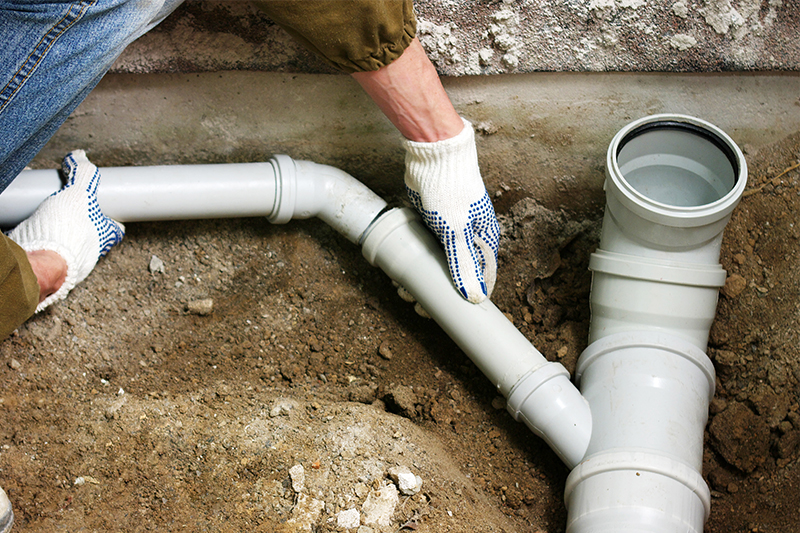PEX plumbing, or cross-linked polyethylene plumbing, has gained popularity in recent years. This is a modern alternative to traditional plumbing materials like copper or galvanized steel.
But why is PEX plumbing bad? Like any plumbing material, PEX has negative parts. This includes fittings and connections issues, limited resistance to high temperatures, prone to chlorine damage and so many others.
However, in this piece, we will delve into some of the reasons why PEX plumbing may not always be the ideal choice for every situation. Also, some prevention tips to handle these challenges.
Advantages of PEX Plumbing
PEX plumbing offers several benefits that make it a preferred choice for many plumbing projects, including
● Flexibility
PEX pipes are highly flexible and can be bent and curved around obstacles, making installation easier and more efficient. They require fewer joints compared to rigid materials like copper piping, reducing the risk of leaks and improving water flow.
● Durability
PEX pipes are resistant to corrosion, scale, and chemicals. This extends their lifespan and reduces the need for maintenance or replacement.
● Freeze Resistance
PEX pipes are highly resistant to freezing and can expand without cracking or bursting. This makes them ideal for cold climates or areas where pipes are exposed to extreme temperature fluctuations. Also, this property reduces the risk of costly water damage caused by frozen pipes.
● Cost-effective
PEX plumbing is generally more affordable compared to traditional plumbing materials such as copper pipes or PVC. The lower cost of materials and ease of installation can result in cost savings for homeowners or builders.
● Resistant to Corrosion and Scale
PEX pipes are resistant to corrosion and scale build-up, extending their lifespan and preventing water pressure loss. Unlike metal pipes, PEX is not susceptible to rust or scale formation, ensuring clean and consistent water flow for a longer duration.
● Versatility
PEX plumbing can be used in a wide range of applications, including new construction, renovations, and retrofitting. It can be installed in different environments, such as under concrete slabs or walls, providing flexibility in design and installation.
Why Is PEX Plumbing Bad?
While PEX plumbing has many advantages, there are potential drawbacks that you should be aware of, as well as contractors.
Health Concerns
One of the main drawbacks of PEX plumbing is the concern about potential health risks associated with the material. PEX is made from a type of plastic that can leach chemicals into the water supply, such as volatile organic compounds (VOCs) and other potentially harmful substances.
While PEX pipes are typically manufactured with additives that help reduce chemical leaching. Studies have shown that some PEX pipes may still leach trace amounts of these chemicals into drinking water.
However, the levels of chemical leaching from PEX pipes are generally within the acceptable limits set by regulations.
Prevention Tips
- Use PEX pipes and fittings that are certified for potable water use
- Look for PEX products that meet relevant industry standards. It should be certified that the material is safe for drinking water systems
- Follow proper installation practices, such as using approved PEX fittings and connections
- Avoid excessive exposure to sunlight or heat, which can degrade the material and potentially release harmful substances
Fittings And Connections Issues
PEX plumbing relies heavily on fittings and connections to create a watertight seal at joints. These connections require specialized tools such as crimp rings or stainless steel clamps to secure the fittings onto the PEX pipes. If not installed properly, they can be prone to
- Leaks
- Failures under pressure
- Fittings popping off
- Potential mold growth
- Long-term durability concerns
Additionally, PEX has excellent freeze tolerance, but the brass fittings used for PEX tubing are highly conductive to thermal energy. This makes them prone to freezing before the tubing. PEX tubing may withstand freezing, but fittings may not.
Prevention Tips
- Use manufacturer guidelines and codes for PEX fittings and connections
- Use certified fittings and tools to ensure reliable performance
- As an installer, you need to understand the correct sizing, placement, and pressure requirements for PEX fittings to ensure a reliable and leak-free plumbing system
Potential for Mechanical Damage
PEX pipes are more susceptible to damage from mechanical impact or crushing than rigid materials like copper or PVC. It gets damaged by excessive bending, crushing, or impacts which can result in leaks or failures in the plumbing system.
Thus, this can be a concern in areas where they are exposed to potential physical damage, such as in basements or areas with heavy foot traffic.
Prevention Tips
- Handle the pipes with care during the installation
- Avoid using sharp tools or excessive force that can cause punctures or crushing
- When routing PEX pipes, avoid tight bends or kinks that can strain the material
- Use protective coverings or shields to reduce the risk of mechanical damage
Limited Resistance to High Temperatures
PEX is a plastic material that can melt or deform when exposed to high temperatures. It’s not suitable for hot water supply lines and radiant heating systems in industrial settings.
However, PEX pipes have a maximum temperature limit specified by the manufacturer. This ranges from 180°F to 200°F, depending on the type of PEX (PEX-A, PEX-B, or PEX-C) and the specific brand.
Prevention Tips
- Proper installation and insulation techniques per manufacturer guidelines
- Find out the local skyscraper codes for the maximum allowable temperature for PEX plumbing
- Avoid using PEX pipes for high-temperature applications like pipes for water heaters. Unless they are specifically designed and labeled for such use
- Use appropriate insulation materials and avoid direct contact with high-temperature sources
Potential for UV Degradation
PEX plumbing is sensitive to UV radiation. It can degrade or fail when exposed to direct sunlight for extended periods. It can be a concern for outdoor or exposed installations.
This may include PEX piping used for outdoor faucets or irrigation systems. However, this is not a common concern in typical indoor plumbing applications where PEX pipes are protected from UV light.
Prevention Tips
- Avoid using PEX pipes in outdoor applications or areas with direct sunlight exposure
- Use protective coverings or insulation to shield the pipes from UV rays in areas where PEX is exposed to natural light
- Keep them covered or stored in shaded areas to reduce their exposure to sunlight
- Use UV-resistant PEX pipes or protective coverings for outdoor PEX plumbing installation
Prone to Chlorine Damage
PEX pipes can be susceptible to damage from exposure to high levels of chlorine and chemicals. This is commonly used as a disinfectant in municipal water supplies.
Over time, chlorine exposure can cause PEX pipes to become brittle and crack, potentially leading to leaks or failures in the plumbing system.
Prevention Tips
- Avoid using PEX pipes in areas with high chlorine levels in the water supply
- Use alternative plumbing materials that are not affected by chlorine, such as copper or CPVC in homes with a highly chlorinated water system
- Install a chlorine filter at the entry point to reduce chlorine levels in the water supply
- Consult with a professional plumber to determine if PEX is the right choice for your specific needs
Bacteria Growth
PEX pipes are made of plastic material. Plastic provides an environment conducive to the growth of certain types of bacteria. This occurs in stagnant water areas within the pipes, such as dead ends or low-flow areas.
The result leads to foul odors, taste changes, and potential health hazards. To mitigate the risk of bacteria growth in PEX plumbing systems, proper installation practices and regular maintenance are crucial.
Preventive Tips
- Ensure proper water flow by using approved disinfection methods during installation
- Flush the system periodically to prevent stagnant water
Prone to Rodent And Pest Damages
PEX plumbing, being a flexible material, can be more susceptible to damage from rodents and pests. Rodents like rats and mice can chew through PEX pipes.
Hence, it can cause leaks and affect water quality. Pests like termites can also damage PEX piping by burrowing through the pipes. This can further lead to structural issues and water leaks.
Prevention Tips
- Seal any openings or gaps in walls or floors where PEX pipes pass through to prevent rodents and pests from entering
- Use protective sleeves specifically designed for PEX pipes to create a barrier against rodents and pests
Non-Recyclability
PEX pipes are made of plastic material that is not widely accepted in most recycling programs. Once PEX pipes reach the end of their lifespan, they are removed from a property during renovations and cannot be recycled.
Instead, they end up in landfills, contributing to environmental waste. This can be a PEX plumbing concern for environmentally conscious homeowners who prioritize eco-friendly options for their plumbing systems.
Tips For Prevention
- Use the appropriate pipe size and length to minimize waste when installing PEX plumbing
- Proper planning and measurement can help reduce the amount of leftover material that needs to be discarded
- Homeowners can consider alternative plumbing materials, such as copper pipes or stainless steel, which are recyclable
Conclusion
While PEX plumbing offers many benefits, such as flexibility and ease of installation, it also has potential drawbacks to consider. These may include health concerns, UV sensitivity, chlorine sensitivity, and issues with fittings and connections.
Proper installation, maintenance, and use of certified materials are crucial to mitigating potential issues. Thus, PEX can still be a viable option for many plumbing applications. Always refer to manufacturer guidelines and seek professional advice when considering or installing PEX plumbing.

